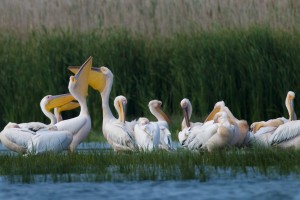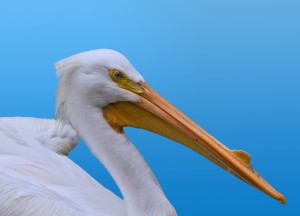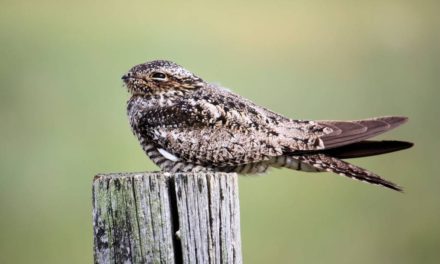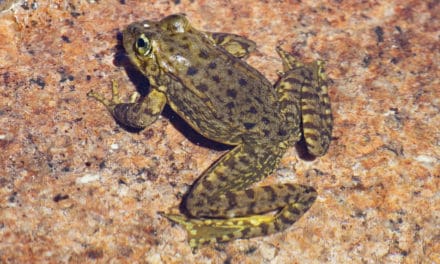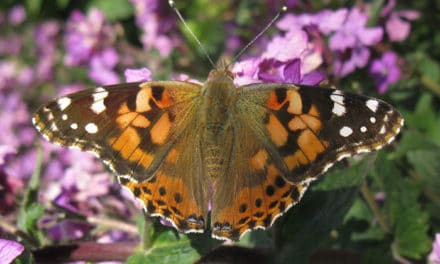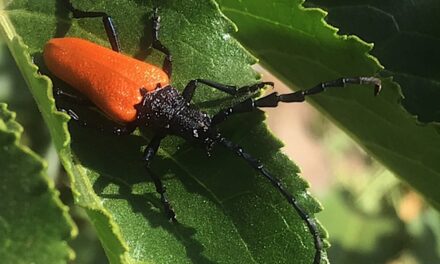By Melissa Wynn
American White Pelicans, flying in from their Pacific coastal winter home, are a sure sign that spring has sprung at Lake Almanor. In late March or early April, I begin to spot a few on the causeway just outside Chester, CA on Hwy 36. A stop to look delivers quite an entertaining crowd.
Most Pelican species do their fishing by diving deep from the air and surprising their catch, swoop and scoop, every bird for himself. American White Pelicans prefer to work as a group, coordinating on the swim, corralling the fish with their feet and taking turns dipping their heads, or making shallow dives, to scoop up their catch. The curious yellow or orange pouch beneath the bill is a perfect flexible fishing net, holding up to 3 gallons of water that is simply drained away by tipping the head forward before swallowing any captured fish. Morning and evening are the best times to catch this interesting feeding behavior.
Our easy going neighbors have majestic wings that spread 8 to 9 feet wide. Weighing in at 15 pounds or more, American White Pelicans are easy to spot from the shore.
Springtime means love in the bird world so the first few weeks the Pelicans are here they spend building their nests in shallow divots scratched in the ground or swimming in pairs preparing to fill them. In June and July the four or so eggs in each nest hatch and Lake Almanor is soon filled with smokey downy chicks, fluffy and so ugly, they’re cute. In two short months the soft mottled fuzz is replaced by stark white adult feathers as well as the black secondary feathers that are only visible when those now-huge wings are open.
September and early October bring the comedy portion of the pelican story as the plump and freshly feathered fledglings learn to fly. They’re so awkward and clumsy that when they do finally get off the ground, it all seems by mistake. I find myself cheering them on, “You can do it Tubby…oops maybe not”. Eventually they all figure it out and head back to the coast for the winter.
Source: USDA Fish and Wildlife Services, CA Dept. of Fish & Game


